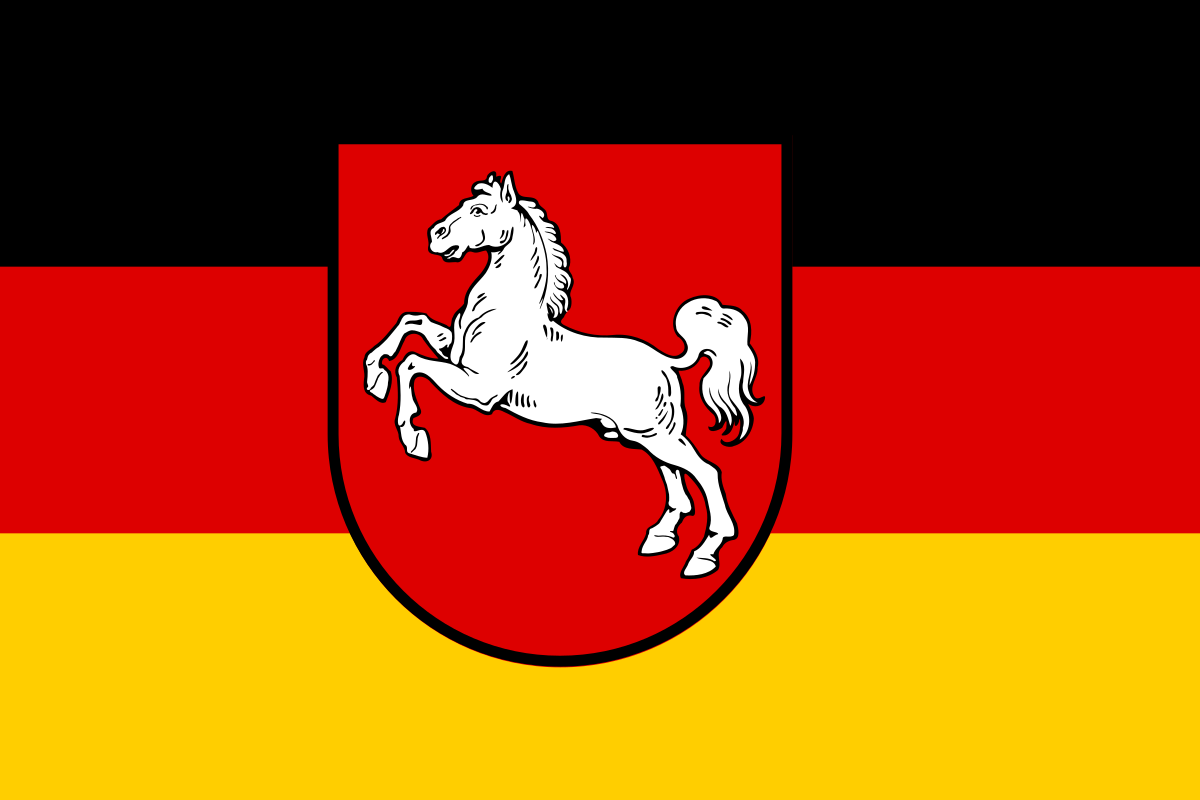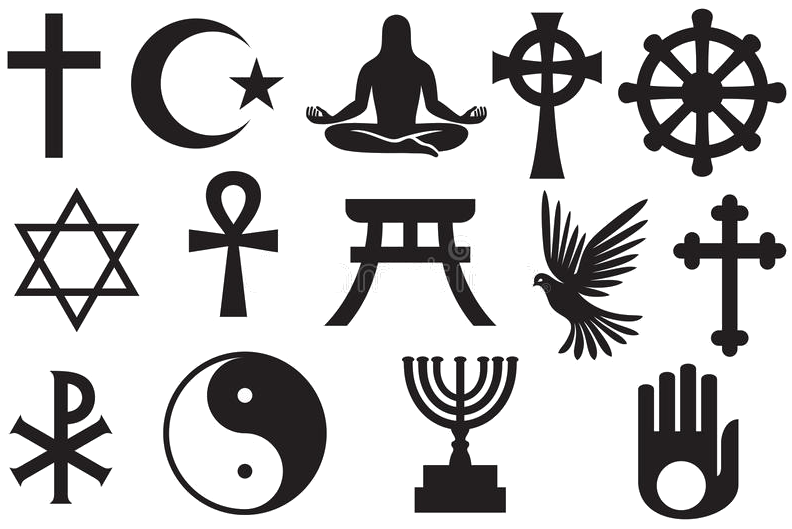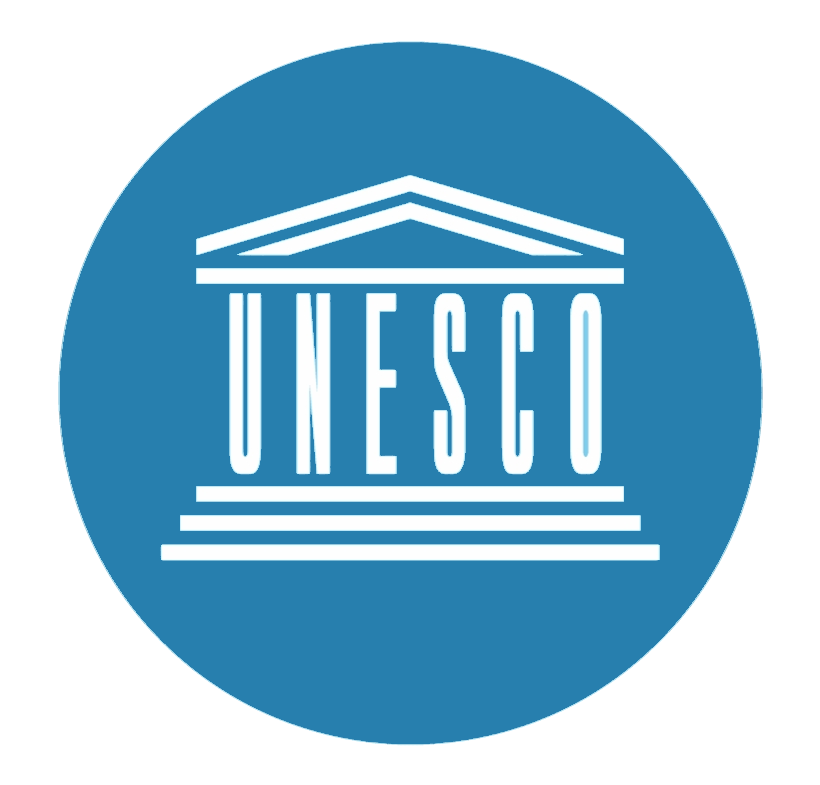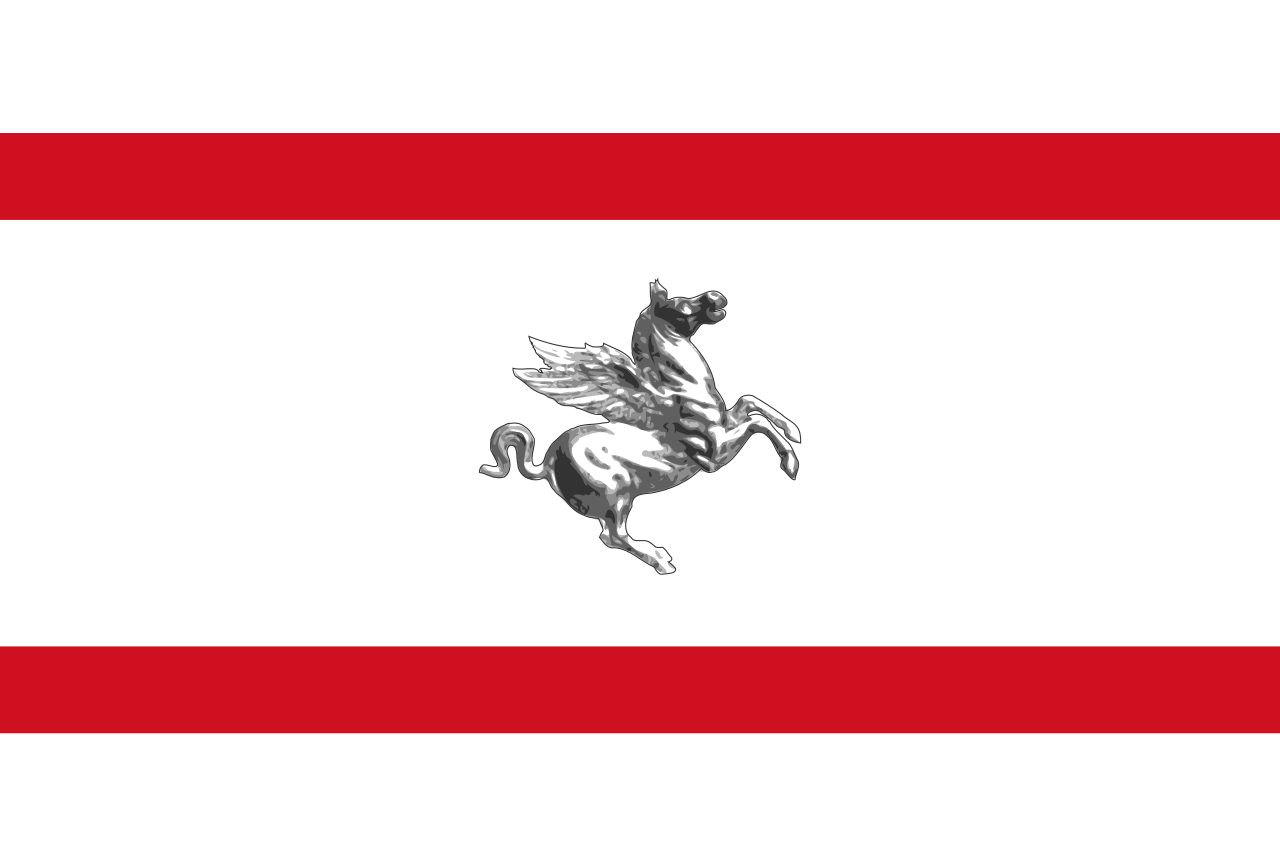
漢德百科全書 | 汉德百科全书
圣希尔德加德·冯·宾根(天主教译宾根的圣贺德佳,圣公会译圣希尔德格,德语:Hildegard von Bingen,拉丁文作Hildegardis Bingensis,1098年—1179年9月17日),又被称为莱茵河的女先知(Sibyl of the Rhine),中世纪德国神学家、作曲家及作家。天主教圣人、教会圣师。她担任艾宾根修道院修道院院长、修院领袖,同时也是个哲学家、科学家、医师、语言学家、社会活动家及博物学家。
Hildegard von Bingen (* 1098 in Bermersheim vor der Höhe (Ort der Taufkirche) oder in Niederhosenbach (damaliger Wohnsitz des Vaters Hildebrecht von Hosenbach); † 17. September 1179 im Kloster Rupertsberg bei Bingen am Rhein) war eine deutsche Benediktinerin, Äbtissin, Dichterin, Komponistin und eine bedeutende natur- und heilkundige Universalgelehrte.
Hildegard von Bingen gilt als erste Vertreterin der deutschen Mystik des Mittelalters. Ihre Werke befassen sich unter anderem mit Religion, Medizin, Musik, Ethik und Kosmologie. Sie war auch Beraterin vieler Persönlichkeiten. Von ihr ist ein umfangreicher Briefwechsel erhalten geblieben, der auch deutliche Ermahnungen gegenüber hochgestellten Zeitgenossen enthält, sowie Berichte über weite Seelsorgereisen und ihre öffentliche Predigertätigkeit.

 Architecture
Architecture

 Architecture
Architecture
 Gothic architecture
Gothic architecture

 History
History

 History
History
 L 1000 - 1500 AD
L 1000 - 1500 AD

 Lower Saxony
Lower Saxony

 Religion
Religion


 Architecture
Architecture

 Architecture
Architecture
 Romanesque architecture
Romanesque architecture

 History
History

 History
History
 L 1000 - 1500 AD
L 1000 - 1500 AD

 Lower Saxony
Lower Saxony

 Religion
Religion


犀那王朝是1070年至1230年期间印度次大陆东北部(孟加拉)的一个印度教王朝。 [1][2]1203年至1204年期间,犀那王朝的都城被古尔王朝攻占。 [3]犀那王朝统治孟加拉期间,种姓制度开始在孟加拉发展。
Die mittelalterliche Sena-Dynastie (ca. 1070–1230) folgte in weiten Teilen Bengalens der Pala-Dynastie nach. Hauptstadt war zuerst Nabadwip; später wurde der Regierungssitz etwa 200 km (Luftlinie) weiter nördlich nach Gaur verlagert – beide Städte liegen an der heutigen Ostgrenze des indischen Bundesstaats Westbengalen zu Bangladesch.

西遮娄其王朝(卡纳达语:ಚಾಲುಕ್ಯ,英语:Western Chalukyas)是南印度的遮娄其人王朝,在10至12世纪时统治大部分的西部德干高原。也被称为后遮娄其或第二遮娄其王朝,用来区别于6至8世纪的早遮娄其和文耆地区(Vengi)的东遮娄其王朝。
Das westliche Chalukya-Reich (/tʃəˈluːkjə/ chə-LOO-kyə) beherrschte zwischen dem 10. und 12. Jahrhundert den größten Teil des westlichen Dekkan in Südindien. Diese Dynastie wird manchmal nach ihrer königlichen Hauptstadt Kalyani, dem heutigen Basavakalyan im modernen Distrikt Bidar im Bundesstaat Karnataka, auch Kalyani Chalukya genannt, oder alternativ aufgrund ihrer theoretischen Verbindung zur Chalukya-Dynastie von Badami aus dem 6. Jahrhundert auch Späte Chalukya.
The Western Chalukya Empire (/tʃəˈluːkjə/ chə-LOO-kyə) ruled most of the western Deccan, South India, between the 10th and 12th centuries. This dynasty is sometimes called the Kalyani Chalukya after its regal capital at Kalyani, today's Basavakalyan in the modern Bidar district of Karnataka state, and alternatively the Later Chalukya from its theoretical relationship to the 6th-century Chalukya dynasty of Badami. The dynasty is called Western Chalukyas to differentiate from the contemporaneous Eastern Chalukyas of Vengi, a separate dynasty. Before the rise of these Chalukyas, the Rashtrakuta Empire of Manyakheta controlled most of the Deccan Plateau and Central India for over two centuries. In 973, seeing confusion in the Rashtrakuta empire after a successful invasion of their capital by the ruler of the Paramara dynasty of Malwa, Tailapa II, a feudatory of the Rashtrakuta dynasty ruling from Bijapur region defeated his overlords and made Manyakheta his capital. The dynasty quickly rose to power and grew into an empire under Someshvara I who moved the capital to Kalyani.
西班牙帝国(西班牙语:Imperio Español)或西班牙殖民帝国(Imperio colonial español)是世界上第一批真正意义上的全球帝国和殖民帝国之一,也是世界历史上最大的帝国之一,被认为是第一个日不落帝国。
16世纪中,西班牙和葡萄牙是欧洲环球探险和殖民扩张的先驱,并在各大海洋开拓贸易路线,使得贸易繁荣,路线从西班牙横跨大西洋到美洲,从墨西哥横跨太平洋,经菲律宾到东亚。西班牙征服者摧毁了阿兹特克、印加帝国和玛雅文明,并对南北美洲大片领土拥有宣称。一时之间,凭著其经验充足的海军,西班牙帝国称霸海洋;凭著其可怕、训练有素的步兵方阵(Tercio),她主宰欧洲战场。著名法国历史学家皮埃尔·维拉尔称之为“演绎出人类历史最非凡的史诗”。西班牙在16至17世纪间经历其文化黄金年代。
16世纪中期开始,西班牙哈布斯堡王朝利用美洲采矿所得的金银取得更多军费,以应付在欧洲和北非的长期战争。西班牙从1580年兼并葡萄牙帝国(于1640年失去)开始,一直维持着世上最大的帝国,直到19世纪丧失美洲殖民地,纵使她从1640年代开始在军事及经济连番遇到波折。正当西班牙因建立帝国而面对新冲击、困境和痛苦,其思想家在自然法、主权、国际法、战争和经济建构了一些最早的现代思想。其有关思想学派统称为萨拉曼卡学派。他们甚至怀疑帝国主义的正统。
西班牙与敌对国家持续斗争,引起领土、贸易和宗教冲突,都使得西班牙国力在17世纪中叶开始下滑。在地中海,她与奥斯曼帝国战事频繁;在欧洲大陆,法国逐渐变得强大;在海外,西班牙首先与葡萄牙竞争,后来的对手包括英格兰和荷兰。而且,英、法、荷三国支持海上抢劫、西班牙在其领土过度动用军力、政府贪污渐趋严重以及军费导致经济停滞,最终导致帝国的衰落。 1713年的乌得勒支和约使西班牙失去在意大利和低地国家的剩余领土,结束了其欧陆帝国的历史。西班牙以后的情况转好,可是在欧洲政治一直只是二流国家。
然而,西班牙一直维持并扩张其殖民帝国。而到了19世纪,半岛战争的冲击引起委内瑞拉和巴拉圭宣布独立(1811年)。随后发生的革命使西班牙丧失在加勒比海附近的殖民地。西班牙帝国在加勒比海(西属古巴和西属波多黎各)、亚洲(西属菲律宾)和大洋洲(西属关岛、西属密克罗尼西亚、西属帕劳及西属北马里亚纳群岛)都保留相当多领土,直到1898年的美西战争。西班牙瓜分非洲所得甚少,包括西属摩洛哥、西属几内亚和西属撒哈拉,分别直到1956、1968和1975年。今日西班牙位于北非沿岸的主权地(Plaza de soberanía),是其昔日殖民地的残余。
西班牙帝国(西班牙语:Imperio Español)或西班牙殖民帝国(Imperio colonial español)是世界上第一批真正意义上的全球帝国和殖民帝国之一,也是世界历史上最大的帝国之一(1790年其面积约2000万平方千米),被认为是领先于大英帝国的第一代日不落帝国(1492年-1975年)。
整个15世纪中,西班牙和葡萄牙是欧洲环球探险、大航海时代、和殖民扩张的先驱。因为西班牙在各大海洋开拓贸易路线,使得贸易繁荣,路线从欧洲横跨大西洋到美洲,从墨西哥横跨太平洋,经菲律宾到东亚。一时之间,凭着其经验充足的海军,西班牙帝国称霸海洋;由于有了在殖民地源源不绝的金钱支援,西班牙在欧洲凭着其造价昂贵、训练有素的大方阵主宰欧洲战场。著名法国历史学家皮埃尔·维拉尔称之为“演绎出人类历史最非凡的史诗”。与此同时,西班牙征服者也残忍的摧毁并屠杀了阿兹特克、印加帝国和玛雅等美洲原住民文明,并对南北美洲大片领土宣称殖民;这些西班牙殖民的影响导致了现在除了巴西以外所有拉丁美洲国家都使用西班牙语和信仰天主教。
16世纪开始,和奥地利同门同宗的哈布斯堡家族取代了原本的皇室,入主西班牙。西班牙哈布斯堡利用美洲采矿所得的金银取得更多军费,以应付在欧洲和北非的长期战争。哈布斯堡王朝统治下的西班牙从1580年兼并葡萄牙帝国、南意大利,在奥地利的哈布斯堡王朝则掌控了神圣罗马帝国和匈牙利,使得西班牙除了在海外一直能维持着世上最大的殖民帝国以外、在欧洲也成为拥有最多的领土国家;版图除了西班牙本土、还包括葡萄牙、比利时、荷兰、南意大利。最后,因为都是同样都是由哈布斯堡家族统治、也都是地域辽阔的大国,所以西班牙帝国和300年后的奥地利帝国、奥匈帝国三者合起来又通称为哈布斯堡帝国。西班牙在16至17世纪间经历其黄金年代,以新教旧教的三十年战争为分界点,之前不断强盛、之后由盛转衰。
17世纪中叶(1640年代开始),因为西班牙与敌对国家持续斗争,引起领土、贸易和宗教冲突。在地中海,她与土耳其的奥斯曼帝国战事频繁;在欧洲大陆,法国的陆军逐渐变得强大;在海外,西班牙首先与葡萄牙竞争,在葡萄牙衰弱后,后来的还要面对荷兰独立的80年战争、和新崛起的海军强国英格兰;但是这些冲突中西班牙胜多败少,基本能维持其海军和陆军在欧洲的顶尖地位。另外,因为正处于黄金时代,所以西班牙思想家首次也是唯一一次百花齐放,在自然法、主权、国际法、战争和经济建构了一些最早的现代思想,其有关思想学派统称为萨拉曼卡学派,有些提倡民主和人权思想的激进者甚至怀疑西班牙帝国主义和君主制的合理性。但是,这个运动没能和文艺复兴、工业革命、启蒙运动等其他欧洲国家的先进思想一样,在身为发源地的西班牙传播开来,这使得西班牙在知识思维层面开始有下滑的迹象,而西欧国家的英法则后来居上。
18世纪,因为西班牙常年在其领土过度动用军力、政府贪污渐趋严重、没有进行农业改良导致经济停滞、以及把在美洲掠夺的金钱都用在修建教堂和扩充军队上,对其文化、艺术、商业上的投资自几乎为零,最终导致西班牙的国力开始明显衰落。1713年的乌得勒支和约使西班牙失去哈布斯堡王朝的统治,改由法国的波旁王朝入驻西班牙,从此西班牙在欧洲大陆上不断要听从于法国的摆布。而奥地利哈布斯堡王朝因为失去了对西班牙王位,法国为了补偿奥地利以及和奥地利大成友好关系,割让了原本西班牙控制的南意大利和比利时给奥地利作为平衡。加上荷兰和葡萄牙早脱离西班牙已独立,西班牙在欧洲的领土只剩下西班牙本土而已,结束了其在欧洲霸主的历史,其欧陆地位被法国和奥地利两国瓜分。18世纪(1700年后),西班牙在欧洲大陆的政治地位一直只能充当法、奥之后的二流国家,但其实力依然有和英国、荷兰相抗衡的能力,也因为本钱雄厚还是能远远超过葡萄牙、丹麦王国、瑞典帝国、俄罗斯帝国、波兰-立陶宛等当时的欧洲中型国家。
19世纪,西班牙虽然在18世纪的欧陆屡战屡败,然而在殖民地的面积方面依然是英法荷葡这四个有殖民地国家的总和,并维持并扩张其殖民帝国,西班牙虽然已经衰败、但依然靠着其广阔的殖民地挺过了英·法·荷三国支持海上抢劫和内部贪污腐败造成的危机。然而好景不长,到了19世纪末期用因为宣扬自由平等博爱思想的法国大革命的冲击,西班牙内乱不止。法兰西第一帝国的拿破仑入侵西班牙引发半岛战争,但更可怕的是民主主义思想在殖民地中产生了连锁反应、在拉丁美洲的殖民地风起云涌的引爆了南美独立战争,这场殖民地对西班牙宗主国的集体叛变,导致几乎所有西班牙在在拉丁美洲的殖民地宣布独立(1808年—1833年)。尽管如此,西班牙帝国由于之前的殖民地够多,所以依然在加勒比海(西属古巴和西属波多黎各)、亚洲(西属菲律宾时期)和大洋洲(西属关岛、西属密克罗尼西亚、西属帕劳及西属北马里亚纳群岛)还保留相当多领土。1898年,原本就是从英国的殖民地独立出来的美国,代表新兴的完成工业革命的国家,在美西战争中给予西班牙殖民帝国最后一击,让西班牙丧失了古巴和菲律宾以及所有在太平洋岛屿上的殖民地,这些太平洋岛屿的殖民地日后成为了美军基地。此时,西班牙地位已经完全没落,不仅不如英法荷奥这些老对手,还输给了新崛起的美国、普鲁士、俄罗斯帝国,西班牙被认为是欧洲最落后国家之一。
20世纪,西班牙瓜分非洲所得甚少,相较于传统殖民地大国(英、法),以及如日中天的德国和比利时,西班牙在瓜分非洲中只拥有包括西属摩洛哥、西属几内亚和西属撒哈拉少量领土,这也是西班牙最后一次殖民扩张。这些面积狭小的非洲殖民地也同样在20世纪(1956年、1968年和1975年),乘着“全世界殖民地从英法的殖民体系中独立”的风潮,也成功脱离西班牙独立。
现今西班牙帝国残留的领土,是位于北非摩洛哥沿岸的休达、梅利利亚以及数个主权地,是西班牙根据战争而获得的领土,导致西班牙至今依然和摩洛哥有领土争端。
スペイン帝国(スペインていこく、西: Imperio Español)は、スペインとその植民地・属領などの総称である。カスティーリャ王国とアラゴン王国の合併によって成立したスペイン王国がナスル朝グラナダ王国を滅ぼし、イベリア半島からイスラーム勢力を一掃した1492年以降、1898年の米西戦争に敗北して、ほぼ全ての海外植民地を失うまでの期間を指す。「帝国」の名称はその広大な統治領域に由来する(共和制のもとでのローマ帝国のごとし)。君主号(皇帝)とは無関係である。1868年から1874年は革命政権の支配の下で、国王は空位となり、やがて共和制に移行した。
とりわけ、16世紀中盤から17世紀前半までの約80年間はスペインが史上最も繁栄した時期であり、黄金世紀(Siglo de Oro)と呼ばれている。スペイン君主のカルロス1世が神聖ローマ帝国皇帝に即位した際には、ヨーロッパにも本国以外の広大な領土を持つなど、その繁栄の様は「太陽の沈まない国」と形容された。
長らく分裂状態にあったイベリア半島であったが、カトリック両王の下で統合を果たしたスペイン王国が1492年にグラナダを陥落させてナスル朝を滅ぼし、レコンキスタを完成させた。その後、スペインは国力を蓄えていき、1519年には国王カルロス1世が皇帝カール5世として即位し、ハプスブルク家の全盛期を迎えるに至る。
この時代、スペインは「アメリカ大陸の発見」によって新たな領土を獲得し、国家としても隆盛を極めていた。1521年にアステカ王国を、1532年にはインカ帝国を滅ぼし、アメリカ大陸はそのほとんどがスペインの植民地となっていた。
「帝国」スペインはフェリペ2世の在位中に最盛期を迎えた。1580年から1640年にかけてスペイン王がポルトガル王も兼ねるようになり、中南米やアジア・アフリカ沿岸に点在するポルトガルの海外植民地を獲得した。また、ヨーロッパではネーデルラントや南イタリア(シチリア王国、ナポリ王国)などを属領とし、フィリピンなどの従来植民地と併せた広大な領土を統治する大国となった。しかし、その治世は多難であり、イタリア戦争、宗教改革、第一次ウィーン包囲といった脅威にさらされ、プレヴェザの海戦、アルマダ海戦での敗北など、衰退の兆しも現れ始めていた。1588年のアルマダ海戦にて、スペインの無敵艦隊がイングランド海軍に敗れると、スペインの衰退は顕著になっていった。イングランドはこの後急速に国力を高め、17世紀後半には史上最大の帝国であるイギリス帝国へと発展していった。
その後のスペインは衰退の一途を辿り、1640年にはポルトガルが独立する(ポルトガル王政復古戦争)。八十年戦争の結果、ネーデルラント連邦共和国(オランダ)も独立を確保する。さらに三十年戦争に介入するが敗退し、1659年にフランスと不平等条約であるピレネー条約を締結し、スペインの黄金世紀は終焉を迎えた。ただ、スペインの植民地は成長を続け、19世紀まで続く植民地帝国としての地位を維持し続けた。
17世紀末にはスペイン・ハプスブルク家が断絶し、王位継承問題のこじれからスペイン継承戦争が始まった。この戦争は12年に及び、戦後処理としてイギリスにジブラルタルとフロリダを譲るなど、スペインの影響力は著しく低下した。カルロス3世(在位:1759年 - 1788年)の時代に一定の中興が成されたものの、イギリス、フランス、オランダなどの新興勢力の後塵を拝することとなった。それでもアメリカ独立戦争におけるスペインの躍進は、スペインの強国としての活気を取り戻した印象をスペイン人に抱かせることとなった。しかしこの結果、新世界においてはアメリカ合衆国の独立によって、スペインによる植民地支配からの脱植民地化の時代へと転換していく契機となった。皮肉にもスペイン本国からの独立を志向した旧植民地の多くが、かつてスペインが独立を助けたアメリカ合衆国を参考とした新国家モデルを模索するようになる。
その後は、ナポレオン・ボナパルト率いるフランス帝国の侵攻(ナポレオン戦争)とボナパルト家による王位の奪取、フランスによる占領に抵抗するスペイン独立戦争、1820年のリエゴ革命による王政の一時廃止と、それまでの混乱に乗じたスペイン領インディアス植民地の相次ぐ実質的独立など、スペインは苦難の歴史を迎えることとなる。
1868年のスペイン9月革命、1873年のスペイン第一共和政成立を経て、1874年にスペインは王政復古を果たすが、1898年に勃発した米西戦争でアメリカ合衆国に敗北し、パリ条約によってカリブ海域ではキューバの独立、アメリカ合衆国へのプエルトリコ割譲、太平洋地域では米へのフィリピン割譲、米・独によるミクロネシア諸島分割により残された海外植民地のほぼ全てを失った。
こうして19世紀末までに、かつての「世界帝国」スペインの遺産はそのほとんどが失われてしまった。これ以後、スペインはわずかに残された北アフリカの植民地(スペイン領サハラ)の維持・拡大を、長年の隣国でもあり盟友でもあるフランスとの提携を通じて模索していくことになる。1975年のマドリード協定によって、そのスペイン領サハラも放棄された。
The Spanish Empire (Spanish: Imperio Español; Latin: Imperium Hispanicum), historically known as the Hispanic Monarchy (Spanish: Monarquía Hispánica) and as the Catholic Monarchy (Spanish: Monarquía Católica[1]), was one of the largest empires in history. From the late 15th century to the early 19th, Spain controlled a huge overseas territory in the New World and the Asian archipelago of the Philippines, what they called "The Indies" (Spanish: Las Indias). It also included territories in Europe, Africa and Oceania.[2] The Spanish Empire has been described as the first global empire in history,[3] a description also given to the Portuguese Empire.[4] It was the world's most powerful empire during the 16th and first half of the 17th centuries, reaching its maximum extension in the 18th century.[5] The Spanish Empire was the first empire to be called "the empire on which the sun never sets".[6]
Castile became the dominant kingdom in Iberia because of its jurisdiction over the overseas empire in the Americas and the Philippines.[7] The structure of empire was established under the Spanish Hapsburgs (1516–1700) and under the Spanish Bourbon monarchs, the empire was brought under greater crown control and increased its revenues from the Indies.[8][9] The crown's authority in The Indies was enlarged by the papal grant of powers of patronage, giving it power in the religious sphere.[10][11] An important element in the formation of Spain's empire was the dynastic union between Isabella I of Castile and Ferdinand II of Aragon, known as the Catholic Monarchs, which initiated political, religious and social cohesion but not political unification.[12] Iberian kingdoms retained their political identities, with particular administration and juridical configurations.
Although the power of the Spanish sovereign as monarch varied from one territory to another, the monarch acted as such in a unitary manner[13] over all the ruler's territories through a system of councils: the unity did not mean uniformity.[14] In 1580, when Philip II of Spain succeeded to the throne of Portugal (as Philip I), he established the Council of Portugal, which oversaw Portugal and its empire and "preserv[ed] its own laws, institutions, and monetary system, and united only in sharing a common sovereign."[15] The Iberian Union remained in place until in 1640, when Portugal overthrew Hapsburg rule and reestablished independence under the House of Braganza.[16] Under Philip II, Spain, rather than the Hapsburg empire, was identified as the most powerful nation in the world, easily eclipsing France and England. Furthermore, despite attacks from other European states, Spain retained its position of dominance with apparent ease.
The Treaty of Cateau-Cambresis (1559) confirmed the inheritance of Philip II in Italy (the Mezzogiorno and the Duchy of Milan). Spain's claims to Naples and Sicily in southern Italy dated back to the Aragonese presence in the 15th century. Following the peace reached in 1559, there would be no Neapolitan revolts against Spanish rule until 1647. The Duchy of Milan formally remained part of the Holy Roman Empire but the title of Duke of Milan was given to the King of Spain. The death of the Ottoman emperor Suleiman the Magnificent in 1566 and the naval victory over the Ottoman Empire at the Battle of Lepanto in 1571 gave Spain a claim to be the greatest power not just in Europe but also in the world.
The Spanish Empire in the Americas was formed after conquering large stretches of land, beginning with Christopher Columbus in the Caribbean Islands. In the early 16th century, it conquered and incorporated the Aztec and Inca Empires, retaining indigenous elites loyal to the Spanish crown and converts to Christianity as intermediaries between their communities and royal government.


El Cid [θið], eigentlich Rodrigo Díaz de Vivar (* um 1045 bis 1050 möglicherweise in Vivar/Bivar; † 10. Juli 1099 in Valencia) war ein kastilischer Ritter und Söldnerführer aus der Zeit der Reconquista, der in der Neuzeit zum spanischen Nationalhelden avancierte. Sein Beiname El Cid ist aus dem arabischen as-sayyid / السيّد / „der Herr“ bzw. volkssprachlich sīdī / سيدي / „mein Herr“ abgeleitet.


西辽(1124年-1218年[注 1]),又称后辽、喀喇契丹、哈剌契丹,是辽朝宗室重臣耶律大石在辽朝灭亡之际重新建立的以“辽”为国号的王朝。
耶律大石原本效力于辽天祚帝,在辽朝即将灭亡之际出奔。1124年,耶律大石在辽朝西北边陲镇州可敦城(今蒙古国布尔干省青托罗盖古回鹘城[注 2])称王,改元延庆,史学界一般以此作为西辽政权的开始。1132年,耶律大石在叶密立(今新疆额敏县)上突厥汗号“菊儿汗”[注 3]及汉尊号“天佑皇帝”,西辽正式建立。之后,耶律大石向今蒙古高原、新疆、中亚及西亚地区扩张,先后击败统治当地的高昌回鹘和东喀喇汗国,并于1134年建都于虎思斡鲁朵(今吉尔吉斯斯坦托克马克东南布拉纳)。随后,西辽继续向西部的西喀喇汗国扩张,并在1141年的卡特万之战中击败塞尔柱帝国联军,征服河中地区和花剌子模,从此成为中亚霸主,威名也远播至欧洲。耶律大石死后,西辽历经萧塔不烟、耶律夷列、耶律普速完三代君主统治;到第五任君主耶律直鲁古时期,西辽由于长期对外战争,国力走向衰落,附属国多次叛乱,并最终被外戚乃蛮部屈出律篡国。最终,新崛起的蒙古帝国于1218年发起攻辽战役,西辽灭亡。
Die Kara Kitai oder Kara Chitai (DMG Qara Ḫitai, deutsch „schwarze Kitai“) oder Westliche Liao-Dynastie (chinesisch 西遼, Pinyin Xī Liáo) waren eine Dynastie, die ein Großreich in Zentralasien – vom Süden des heutigen Kasachstans bis zum heutigen Xinjiang – gründete und die Epoche von 1128 bis 1218 entscheidend mitgestaltete, bis ihr Reich von Dschingis Khan erobert wurde.
 Music
Music

 World Heritage
World Heritage
 Colleges and Universities in Europe
Colleges and Universities in Europe
 Toscana
Toscana